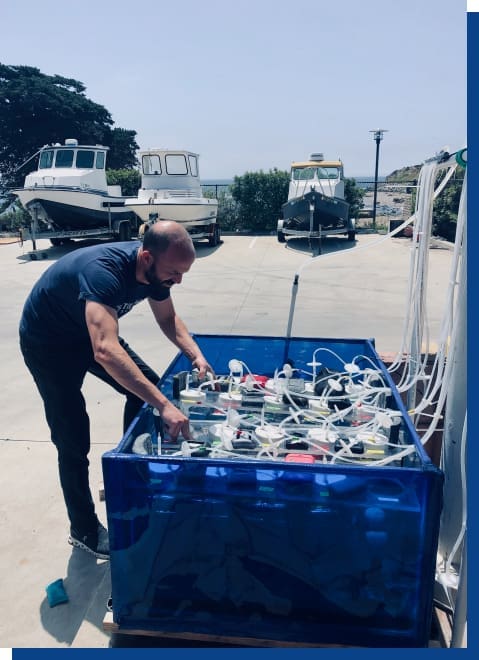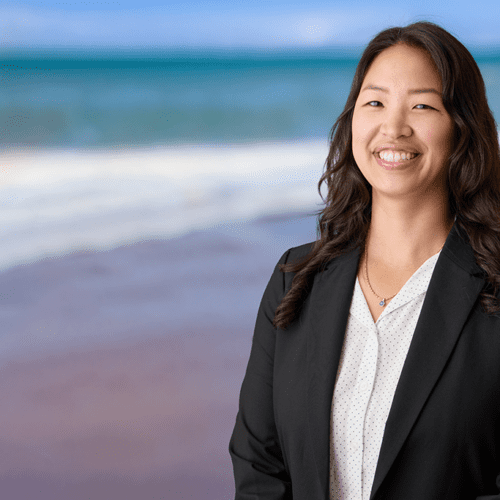Ocean Visions Launchpad Program Advisor: James Gately
Marine carbon dioxide removal skeptic to collaborator
James Gately is a biological oceanographer postdoc working at University of California – Santa Barbara. He serves as an advisor to Captura and CarbonBlue as part of Ocean Visions’ Launchpad program. James shares his journey from marine carbon dioxide removal (mCDR) skeptic to collaborator.
I take a neutral position on all marine carbon dioxide removal (mCDR) processes – even the one I’m studying. I consider myself a skeptic.


I believe we are obligated to explore options that might undue some of the damage we’ve already done, as well as prevent future environmental harm.
In order to meet our climate goals set by the Paris Agreement and the IPCC, simply cutting emissions is not enough. We have to remove legacy carbon through CDR technologies. I understand and empathize with skeptics and individuals in the climate movement that might be concerned that this means allowing fossil fuel companies to keep emitting. But that’s not our aim. mCDR is not a silver bullet for climate change; the hope is that mCDR technologies can remove 9-10 gigatons of legacy CO2 per year, but we’re emitting ~45 gigatons/year. Reducing emissions must remain our primary goal. We have a lot of work to do.

Assessing Technologies is Critical

We also have to consider that we’re already geoengineering the ocean; it is warming and acidifying. The ocean has absorbed about 90% of the excess heat produced by fossil fuel emissions and about a third of emitted CO2. These changes can have deleterious effects on marine organisms, from phytoplankton to corals to fishes. Our marine ecosystems are already at risk and there are consequences for inaction as well.
Humans have a habit of trying to innovate or engineer their way out of problems – sometimes we are successful, but often ideas fail or lead to unforeseen, potentially negative, outcomes. Marine carbon removal technologies offer a potential way forward. Right now, the scientific community is working hard to assess if these mCDR technologies are effective, safe, and scalable. I hope they prove to be beneficial tools, but we need to rigorously assess them first. If they prove to be inefficient, or dangerous, we then need to shift our focus elsewhere. We each have a responsibility to address the climate crisis, which is a direct result of our actions.
Launchpad program: A bridge between industry and academia
My research is very focused on alkalinity enhancement and its impacts on ocean biology. As an advisor to Captura, I have the opportunity to see a different mCDR process and witness the broader CDR landscape, which stretches me to think in a different way. I can also apply similar questions from my work to their process. Captura’s system directly removes carbon from seawater, so I advise their team about methods of testing how their carbon-depleted seawater might impact marine microbes. What is the change in pH doing to the biology? What organisms are being caught in their filters? What are the impacts on small microbes and bacteria going through their system and discharged out the other side?
Working in academia can often feel like a bubble: The concerns and questions being considered on the industry side are not always clear. It’s important to bridge the gap between business and academia. Ocean Visions’ Launchpad program offers a crucial role for where we scientists need to be – as advisors. Our expertise is needed.



With such rapid innovation happening in the private sector, as a scientist, I worry that industry isn’t aware of the questions they need to be asking from a biological perspective. Ocean Visions creates this bridge to open communication and collaboration between startup companies and scientists like myself.
The challenging question is: When do we know enough to test potential solutions at a larger scale? With the urgency of the climate crisis and the need to remove legacy CO2 and its impact on the ocean – what’s the level of risk we’re willing to take with these technologies?
One thing to help narrow the research is understanding the regulatory considerations, what the EPA requires you to monitor, and other policy parameters. Collaborating with Martha Sutula as an advisor to Captura’s mCDR work has given me a broader perspective and gives real-world applications on how to focus our research.
I would like to continue doing advisory work, because scientists are often missing from industry conversations. I like being there – it’s a great opportunity.




